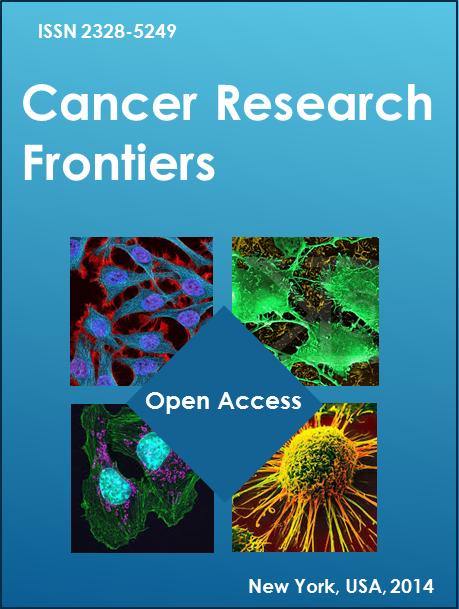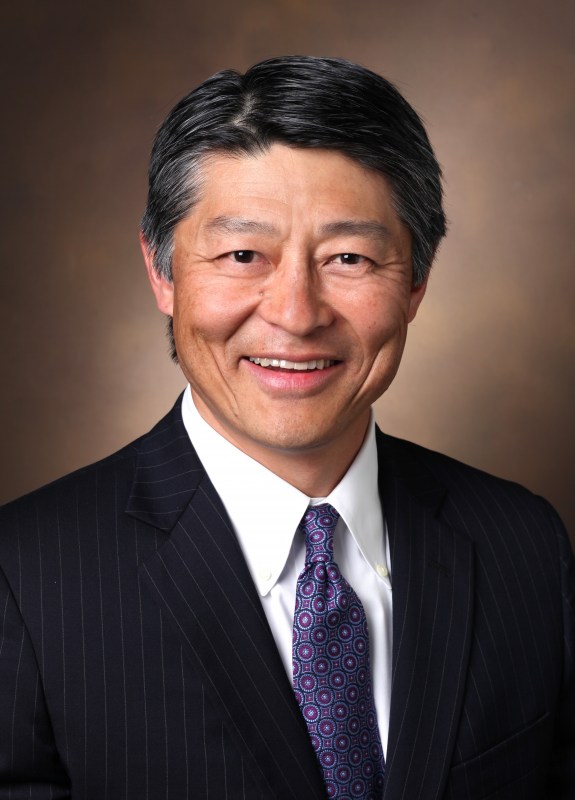Abstract _ Full Text (HTML) _ Full Text (PDF)
Review
Cancer Research Frontiers. 2017; 3(1): 215-229. doi: 10.17980/2017.215
Role of altered fractionation radiotherapy schedules in head and neck squamous cell carcinoma: Rationale, evidence and clinical issues.
Pushpa Naga CH1*, Janaki MG2, Kirthi Koushik AS2.
1Department of Radiation Oncology, Tata Memorial Hospital, Mumbai, Maharashtra, India.
2Department of Radiation Oncology, M.S. Ramaiah Medical College and Hospitals, Bengaluru, Karnataka, India.
*Corresponding author: Dr. Pushpa Naga CH, MD, DNB. Tata Memorial Hospital, Homi-Bhabha National Institute, Dr Ernest Borges Street, Mumbai – 400012, Maharashtra, India. Phone: +912224176011; Fax No: +912224146747. E-mail:
Citation: Pushpa Naga CH, et al. Role of altered fractionation radiotherapy schedules in head and neck squamous cell carcinoma: Rationale, evidence and clinical issues. Cancer Research Frontiers. 2017; 3(1): 215-229. doi: 10.17980/2017.215
Copyright: @ 2017 Pushpa Naga CH, et al. This is an open-access article distributed under the terms of the Creative Commons Attribution License, which permits unrestricted use, distribution, and reproduction in any medium, provided the original author and source are credited.
Competing Interests: The authors declare no competing financial interests.
Received July 3, 2018; Revised Aug 29, 2018; Accepted Sept 6, 2018; Published Sept 12, 2018.
Abstract
Purpose: To review and summarize literature discussing the role of various altered fractionation schedules in head and neck squamous cell carcinoma (HNSCC).
Methods and materials: Brief overview of pivotal clinical trials investigating the role of altered fractionation with conventional fractionation radiotherapy schedules in HNSCC patients treated with curative intent radiotherapy.
Results: Overall, altered fractionation regimens have demonstrated improved outcomes in the curative treatment of HNSCC. Upon comparing different schedules, hyper-fractionated radiotherapy has shown more favorable impact with comparable survival advantage to that of concurrent chemo-radiotherapy. Although, the concept of integrating concurrent chemotherapy with altered fractionation is promising to improve control, it is at the cost of additional toxicity. Mild hypo-fractionation may be advantageous in achieving superior results in early glottic tumors.
Conclusions: This summary is a compilation of large published clinical studies addressing biological rationale, evidence and clinical issues of various altered fractionation schedules and may be useful to facilitate clinician in treatment-decisions making in a clinical context.
Key words: Head and neck cancer, Radiotherapy, Altered fractionation.
Introduction
Radiation therapy (RT) plays a pivotal role in multi-disciplinary treatment management of head and neck squamous cell carcinoma (HNSCC) (1). In curative intent radiotherapy of HNSCC, differences in clinical outcome is accountable to treatment-related variables including total dose, overall-treatment time (OTT) and addition of chemotherapy besides tumor-related prognostic factors (2,3). Conventional multi-fractionated RT regimens are largely the result of early radiobiological experiments conducted in 1920-1930’s (4,5). Although, standard conventional fractionation (CF) of delivering five fractions (F) per week, 1.8–2.0 Gy per fraction has been time-tested since many decades, it is more of a convenient approach than a scientific one.
In light of disappointing trial results of the CF, improved understanding of radiobiology in succeeding decades has led many investigators to test newer treatment strategies and changes in conventional dose-fractionation schedules (6). Various modifications to CF, thereby modifying total dose and OTT have been attempted.
The present article aims to review various altered fractionation schedules with an emphasis on radiobiological rationale and historical evidence, including their contribution towards therapeutic gain, encountered challenges in clinical implementation, current prospective and direction for future research and development.
Various altered fractionation schedules are reviewed under the following headings.
- Hyper-fractionation.
- Accelerated fractionation.
- Acceleration and hyper-fractionation.
- Accelerated fractionation post-operative radiotherapy.
- Altered fractionation radiotherapy versus concurrent chemo-radiotherapy.
- Altered fractionation with concurrent cisplatin chemotherapy.
- Altered fractionation with concurrent cisplatin chemotherapy and targeted therapy.
- Hypo-fractionation.
A brief overview of different types of altered fractionation schedules is summarized in Table 1.
Table 1. Summary of the different altered fractionation schedules.
I. Hyper-fractionation (HF)
Salient features in comparison to CF: Similar OTT, higher total dose, more than 5 fractions per week and ≈1.15 Gy per fraction.
Rationale: Delivering larger number of smaller fractions exploits the differential sensitivity of tumor cells and normal tissues to radiation, to increase the therapeutic gain. It is associated with reduced morbidity in the late-reacting normal tissues with low α/β ratios like spinal cord and subcutaneous tissue because of delivery of low dose per fraction.
Evidence: Initial encouraging data of HF from phase 2 study University of Florida (7), inspired the Radiation Therapy Oncology Group (RTOG 90-03) four-arm a large phase III clinical trial, in the United States. The trial was designed to compare HF with two variants of AF, showed improvement in 2-year LCR of 8.4% with 81.6 Gy (HF arm) (8). Both AF with a concomitant boost and HF were associated with improved loco-regional control (LRC) and disease-free survival (DFS) as compared with CF. However, its association with increased acute toxicity was reported with no significant difference in the frequency of grade 3 or worse late effects at 6-24 months after treatment among the various groups.
Meta-Analysis of Radiotherapy in Carcinomas of Head and neck (MARCH) collaborative group analysed 15 randomized trials conducted between 1969 and 1998 with 6515 patients comparing CF with HF or AF (9). Overall, oropharyngeal and laryngeal were the commonest sites included with stage III-IV disease consisting of 74%. With a median follow-up of six years, 3.4% absolute benefit at 5-years (p=0.003) was observed with altered fractionation RT. Further analysis showed significantly higher benefit with HF arm (8% at 5 years) than AF (2% and 1.7% at 5 years for without and with total dose reduction groups (p=0.02), respectively). Altered fractionation schedule also showed 6.4% benefit at 5 years for LRC in comparison to CF (p<0.0001), although the magnitude of its effect was less marked for nodal control than local control (9, 10). Subgroup analysis exhibited a strong correlation of decreasing effect of altered fractionation with increasing age and with poor performance status. This may be partially explained by poor general health, lower compliance and tolerance and non-cancer related deaths in older patients.
In spite of evidence revealing higher survival benefit with HF regimen (8% and 6.5% at 5 years in MARCH and MACH-NC meta-analysis (11,12), respectively), there is a considerable economic and social problem associated with it in doubling the number of treatments and requiring patients to wait for six hours to complete treatment on each day of course which lasts up to a total of seven weeks. Therefore, HF scheduling has not been widely adopted owing to patient inconvenience, logistics, cost and higher acute toxicities. Nevertheless, in an attempt to improve the treatment outcome role of HF in conjunction with concurrent chemotherapy are being more recently tested.
II. Accelerated fractionation (AF)
Salient features of Pure AF in comparison to CF: Similar total dose, reduction of OTT by 1–2 weeks, more than 5 fractions per week and ≈1.8-2.0 Gy per fraction.
Rationale: Pure AF: Reduction of OTT without contemporary changes in the fraction size or total dose decreases the regeneration of tumor cell during treatment and thus, increases the probability of tumor control for a given total dose.
During the initial course of RT, the tumor overtly shrinks and regresses; the remaining resistant surviving clonogenic tumor cells divide during the later stage of the RT course which is referred as accelerated repopulation. This is a key factor determining the local control rate (LCR), particularly in HNSCC. It has been demonstrated that with CF, a break of about one week is associated with 10-12% absolute decrease in local control. Hence, a break of even a single day is associated with 1.4% (Range 0.4%-2.5%) reduction in LCR rate, regardless of the fractionation schedule and primary tumor site (13).
Modifications of AF
Hence, in order to accelerate the radiation, various modifications by delivering the more fractions per week like continuous delivery of treatment during weekends, i.e., seven fractions per week, delivering six fractions per week, where sixth fraction is delivered on the sixth day of week or as the second fraction after 6 hour interval on last treatment of week (Friday’s) or first day of treatment (Monday’s) or on any of weekday treatment (Monday to Friday) and delivery of concomitant boost in last two weeks of treatment. Table 2 shows different altered fractionation, RT alone trials in head & neck cancers (8, 14-17).
Table 2: Altered Fractionation Trials in Head & Neck Cancers – RT Alone
Abbreviations: AF: Accelerated fractionation., AFX-CB: Accelerated fractionation using concomitant boost, AFX- SC: Accelerated fractionation with split-course, CAIR: Continuous Accelerated Ir-Radiation, CF: Conventional fractionation, D: days, F: Fractions, HF: Hyper-fractionation, HNSCC: Head and neck squamous cell carcinoma, LRC: Loco-regional control, NS: Not significant, SS: Statistically Significant, OS: Overall survival, OTT: Overall treatment time. BID: two times a day, TID: three times a day.
Type A: Accelerated fractionation in combination with hyper-fractionation (AHF)
Salient features in comparison to CF: Reduced total dose, reduction of OTT by 3-4 weeks, more than 10 fractions per week and <1.8 Gy per fraction.
Evidence: In 1990’s, UK conducted a unique 3:2 randomization study called continuous hyper-fractionated accelerated radiotherapy (CHART) regimen (14) consisted low dose per fractionation to a total dose of 50 to 54 Gy in 36 F over 12 consecutive days, with 3 F delivered daily with an inter-fraction interval of 6 hours. The results showed similar local control owing to short OTT, brisk acute reactions but peaked after completion of treatment and did not translate into consequential late sequelae because of low total dose (50-54 Gy), but fewer late effects than conventional regimens except several myelopathies were recorded, the probable cause being short inter-fraction interval of 6 hours is not sufficient for complete recovery of sublethal damage. It was advantageous in particular subgroups of patients in younger patients (p=0.041) and advanced laryngeal tumors (p=0.002) with high compliance. Its long-term follow-up results, updated in 2008 revealed a low level of moderate to severe long-term morbidity together with a good and maintained level of LRC indicating its therapeutic benefit (18).
Type B: Accelerated fractionation with split-course (AFX- SC)
Salient features in comparison to CF: Similar total dose, reduced OTT by 2 weeks, more than 5 fractions per week and <1.8 Gy per fraction.
Evidence: EORTC 22851 Protocol by Horiot et al conducted phase III randomized controlled trial comparing AF with 2 weeks OTT reduction versus CF (19). The first sequence of accelerated regimen consisted of 28.8 Gy in 18 F over 7 days following the second course started on day 21 using the same fractionation schedule. They delivered 43.2 Gy in 27 F over 11 days to a cumulative dose of 72 Gy in 45 F and 4.5 to 5 weeks for the two treatment courses. At 5 years, 13% LRC absolute gain (from 46% in CF arm to 59% in AF arm; 95% CI 3-23% gain), representing a 24% reduction of local failure rate. However, this regime failed for clinical use as the study arm suffered from greater normal tissue toxicity than CF arm. The increased toxicity could be a result of many factors, including insufficient time for late responding normal tissue to repair between fractions and hence resulting in increased late effects as well consequential late effects due to a high degree of early toxicity. The gap in treatment negotiated the benefit of the accelerated treatment.
The split-course AF is radio-biologically inferior as tumor repopulation occurs in the interval between treatment courses. For each day added to OTT, an additional dose is needed to be administered to account for tumor repopulation. In rapidly repopulating tumors like head and neck cancers, this may be up to 0.6 Gy/day. Hence, although split course treatments are well tolerated, it has a significantly poorer outcome in terms of cure. It is no more practiced in head and neck cancers except in some palliative settings.
Type C: Accelerated fractionation using concomitant boost (AFX-CB)
Salient features in comparison to CF: Similar total dose, reduced OTT by 2 weeks, 5 fractions per week, followed by 10 fractions per week in the last 2 weeks of treatment and <1.8 Gy per fraction.
Evidence: RTOG 90-03 (8) used this type of accelerated treatment where boost fraction was delivered in the last 2 weeks of conventional treatment as a late, accelerating component given as a second fraction with 6-8 hours from the main treatment to allow some repair to occur. This approach has shown an improved overall survival and increased rate of local control along with increased acute toxicities. However, evidence suggests that late side effects appear to occur with similar frequency to CF.
Type D: Accelerated fractionation with dose escalation
Salient features in comparison to CF: Similar total dose, reduced OTT by 2 weeks, more than 5 fractions per week and <1.8 Gy per fraction.
Rationale: Treatment intensification by dose escalation is based on a hypothesis that less intensive therapy to start with which will stimulate a regenerative response in the normal mucosa such that it can better tolerate more intensive treatment as the course progresses. This allows to increase the tumor control without increasing the risk of late complications. On the other hand, availability of modern conformal techniques like intensity modulated radiotherapy (IMRT) and its ability to deliver simultaneous integrated boost (SIB) from day-one, allows dose escalation without compromising safety and treatment compliance and is being evaluated in many studies.
Review on randomized trials for AF with different fractions per week:
- 10 fractions per week
The Vancouver group (20) investigated 82 patients with stage III-IV oral cavity, oropharynx, hypopharynx or laryngeal tumors receiving 66 Gy in 33 F either as 2 Gy daily fractions (OD) or 2 Gy twice daily fractions (BID) in which OTT was shortened from conventional 45-48 days to 22-25 days. An initial improvement of clinical response in tumor control in the BID arm was not sustained and the 3-year outcome showed no survival or disease/recurrence-free benefit. As expected the acute effects were much greater in the BID arm. The combined grade 3 and 4 late effects were similar but a significantly greater proportion of grade 4 late reactions occurred in the AF than CF group leading to the premature termination of the study.
2. 7 fractions per week
A randomized trial by Maciejewski et al (21) evaluated 44 patients with stage T2-4N0-1M0 HNSCC by means of 2 weeks OTT acceleration. They delivered a total dose of 70 Gy in 35 F at an interval of 24 hours (2 Gy per fraction) on all weekdays (14 Gy per week) over 5 weeks. Conventional arm received the same total dose in same fractionation, but over 7 weeks. Analysis showed an early tumor regression in 83% of the study group vs. 62% in the control group. Complete nodal regression in 100% in study arm vs. 73% control arm. Mucosal toxicities showed significant difference both in regard to the duration and severity of mucositis. It was observed one week after starting the treatment, its severity increased between days 14-21 to reach confluent mucositis covering the entire field in 48% of patients in the accelerated arm as compared to the 5% in the conventional arm, and lasted for more than 3 weeks of duration. They concluded that although an improvement in the early tumor response obtained with 7-day regime, the high incidence of severe acute reactions and consequential late effects (30%) were unacceptable.
The overhead trial was continued by Skladowski et al (15) with a modification of 7-day continuous AF employing boost field delivery on Saturdays and Sundays. They carried out a randomized control trial on 100 patients treated between 1993 and 1996 of stage T2-4N0-1M0. Seven-day-continuous accelerated irradiation (CAIR) (n=51) was compared to CF (5 days per week) (n=49). Both arms were constituting majority of laryngeal cases (39% and 44%, respectively). All patients received 2 Gy or 1.8 Gy/day at regular 24-hour intervals to total dose in the range of 66±72 Gy (depending on tumor stage) in both the arm on Co60 beams using two parallel-opposed fields. In CAIR arm, a small field limited to the primary tumor and involved node only were irradiated on Saturdays and Sundays. The only difference was OTT is 5 weeks in the CAIR and 7 weeks in the control arm. It demonstrated a 3 year LRC of 82% in CAIR versus 37% in the control arm and higher acute toxicities requiring supportive care in 92% (n=45) of patients versus 48% (n=24) in the control arm and also concluded that therapeutic gain of 45% in 3-year tumor control in favor of CAIR is likely the effect of shortening of OTT by 14 days. However, there was no significant difference in late normal tissue reaction which was 8% versus 4%.
3. 6 fractions per week
A randomized controlled comparison studies, DAHANCA 6 & 7 (16) conducted by Overgaard et al evaluated five versus six fractions per week in 1476 HNSCC patients treated between 1992-1999. DAHANCA 6 included T2-4 glottic tumors and DAHANCA 7 included supraglottic larynx, pharynx (including nasopharynx) and oral cavity tumors. All were randomly assigned to receive five (n=726) or six (n=750) fractions per week to the same total dose (66–68 Gy in 33–34 F). All patients also received the Nimorazole (hypoxic radio-sensitizer), except those with glottic tumors. OTT was kept as planned with a median of 39 days and 46 days in 6 F and 5 F groups, respectively. Results revealed 5 year LRC rates of 70% and 60% for 6 F and 5 F per week groups, respectively (p=0.0005). The benefit in tumor-control resulted in a significantly better disease-specific survival in six fraction group (73% vs. 63%, p=0.01), but not overall survival. Although, confluent acute mucositis was observed more frequently in altered fraction group (53% vs. 33%, p<0.000), but it was transient.
Another randomized, multicentric study International Atomic Energy Agency-coordinated trial (IAEA-ACC Study) (17) carried out by Overgaard et al has compared five versus six fractions per week. The reduction in OTT by one week from 47 to 40 days has shown a significant improvement in 5 years LRC from 30% to 42% in AF arm and also increase in acute mucositis of 5.3% versus 10.8% in accelerated arm. Subgroup analysis showed the greatest benefit in patients with tumors of the larynx and less benefit in more advanced tumors (all sites) with a large nodal disease. A recent MARCH review has shown absolute benefit of 2% with accelerated fractionation without total dose reduction and 1.7% with total dose reduction at 5 years (p =0.02) (10).
Among the accelerated fractionation schedules, acceleration of radiation by one week without dose reduction by delivering six-fractions per week instead of five-fractions is found to have a beneficial impact on LRC along with a modest reduction of OTT without an increase in late toxic effects. However, it is shown to have variable results.
III. Acceleration and hyper-fractionation (AHF)
Salient features in comparison to CF: Reduction of OTT from more than 2 weeks, reduced total dose, and more than 5 fractions per week.
Rationale: Combined approach of both acceleration and hyper-fractionation has been tried to modify both total dose delivered and OTT. HF with low dose per fraction helps to minimize late effects and by accelerating OTT, helps to minimize tumor proliferation.
The EORTC 22791 protocol (22) for oropharyngeal cases compared HF (1.15 Gy twice daily or 80.5 Gy over 7 weeks) with CF (2 Gy once daily or 70 Gy over 7 weeks). It showed an absolute improvement in 5-year LCR of 19% with 80.5 Gy (40% versus 59%; p=0.02) and no increase in late complications. A recent long-term follow up analysis has demonstrated a small survival advantage for HF. Similarly, a GORTEC study (23) which delivered 63 Gy in just over 3 weeks (22 days) also showed improved LCR of 24% at 6 years but at the expense of severe acute mucositis (p=0.001).
This combined approach is still not a standard of care due to its association with higher acute normal tissue toxicities and the existence of a real benefit has been challenged.
IV. Accelerated fractionation post-operative radiotherapy
The use of altered fractionation in the context of adjuvant post-op radiation in head and neck dates back to the 1990’s, but tested only in fewer studies with less favorable results.
In early 1990’s, investigator from Egypt (24) reported no added benefits with post-operative AHF (42 Gy in 30 F over 11 days; 3 F per day) as compared to CF. However, AHF was found to be associated with improved disease control in the fast growing tumors. Subsequently a decade later, Italian multi-centric prospective trial (25) compared AF adjuvant radiation (64 Gy over 5 weeks with biphasic concomitant boost) with CF (60 Gy over 6 weeks) in 226 post-operative cases of locally advanced oral cavity, oropharynx, larynx, or hypopharynx tumors with one or more high-risk features. Half of patients treated with AF developed confluent mucositis, compared with only 27% of those treated with CF (p=0.006) but similar late toxicity 18% versus 27% (p=0.10). Although, no difference in outcome was seen, AF showed improved LRC for patients who had a delay in adjuvant RT.
Lately published evidence from Poland group (26) had allocated 279 patients of high-risk larynx (57%) and oral cavity/oropharynx (43%) to receive either CF (63 Gy in 35 F over 7 weeks) or AF (63 Gy in 35 F over 5 weeks; 7 F per week). Results revealed similar LRC at 3-years between two arms (64% Vs. 70%) but subset analysis a showed significant advantage for oral cavity and oropharyngeal tumors.
V. Altered fractionation radiotherapy versus concurrent chemo-radiotherapy
Rationale: The addition of chemotherapy to radiation helps to sensitize tumors by inhibiting the repair of sublethal radiation damage and preferentially killing hypoxic cells. Concurrent chemoradiotherapy (CTRT) has shown to improve loco-regional control and has become the standard of care for locally advanced HNSCC. The benefit in altered fractionation led to many investigators to evaluate concurrent CTRT versus altered fractionation.
Chitapanarux et al. (27) conducted a prospective randomized clinical trial to compare CTRT and AHF in 85 patients. The results showed the 5-year LRC of 69.6% in the CTRT arm and 55.0% in the AHF arm (p=0.184). Similarly, 5-year overall survival rate was 76.1% and 63.5% for CTRT and AHF arm (p=0.05), respectively. Also, a recent meta-analysis by Gupta et al. (28) has concluded HF schedule alone was comparable to CTRT in terms of the hazard ratio (HR=1.13) for death. But AF with or without dose reduction was found to be inferior to CTRT.
In the MARCH meta-analysis (9), it was observed that altered fractionation had a more pronounced advantage in improving local control rates as compared to nodal control. Thus, though logistically challenging HF may give similar results to that of concurrent CTRT and may be tried in locally advanced diseases if feasible. It may be also more useful in patients with limited nodal burden. AF may provide better overall survival and local control than CF, but the results are inferior to CTRT. Also AF schedules are easier to implement than HF regimen and thus may be tried on who may not be suitable for chemotherapy and in centers where implementing HF is difficult (10).
VI. Altered fractionation with concurrent cisplatin chemotherapy
Rationale: The combined usage of accelerated fractionation radiation with concurrent cisplatin chemotherapy has shown improvement in loco-regional disease control and consistent gain in survival. However, these benefits are at the expense of slightly higher muco-cutaneous toxicities.
Evidence: Results of two prime meta-analyses, MARCH (9) revealing 8% absolute overall survival benefit with the HF schedule while MACH-NC (12,29) with addition of concurrent chemotherapy adding 6.5% absolute overall survival has led various investigators to combine these two regimens to achieve a better tumor control.
A phase II study RTOG-9914 (30) treated oral cavity, oropharynx, hypopharynx and laryngeal tumors (n=84) with concomitant boost radiation (72 Gy in 6 weeks) and concurrent cisplatin. The authors reported 2- and 4-year loco regional failure of 33% and 36%. 2- and 4-year overall survival 70% and 54% respectively, with 42% grade 3–4 late toxicity showing the feasibility of combining accelerated fractionation radiation and chemotherapy. Consequently, a large phase III randomized study, RTOG-0129 (31), randomly allocated 723 patients of stage III-IV (T2N2-3M0, T3-4AnyNM0) oral cavity, oropharynx, hypopharynx, or larynx to either conventional CTRT of 70 Gy in 35 F over 7 weeks or concomitant boost chemo-radiation of 72 Gy in 42 F over 6 weeks. In an updated analysis with a median follow up of 7.9 years the trial reported no differences in overall survival, progression free survival, loco regional failure and distant metastasis rate as well no significant differences in the grade 3-5 acute or late toxicities between the groups.
Usage of combination of altered fractionation with chemotherapy without expense of normal tissue toxicities is a challenge of today. Table 3 shows randomized trials of AF with concurrent cisplatin chemotherapy (30-32). Though these have failed to demonstrate any survival advantage, it’s a promising approach to improve the LRC. Similar results were also witnessed in the recently published study from our institution (33); a further investigation with newer strategies is needed to evaluate the effectiveness in detail.
Table 3: Altered Fractionation Trials in Head & Neck Cancers – Accelerated RT along with concurrent cisplatin chemotherapy.
Abbreviations: RTOG: Radiation Therapy Oncology Group, RT: Radiotherapy, Gy: Gray, F: Fraction, CF: Conventional fractionation, AF: Accelerated fractionation, NS: Not significant, SS: Statistically Significant, OS: Overall Survival, LRF: Loco-regional failure, PFS: Progression free survival.
VII. Altered fractionation with concurrent cisplatin chemotherapy and targeted therapy
Rationale: Over expression of epithelial growth factor receptor (EGFR) in 80-90% of head and neck cancers and its associated poor prognosis has led the search efforts attempted to exploit biologic differences exist between normal and malignant cells, to develop tumor-specific therapies. Usage of anti-EGFR antibodies/small-molecule inhibitors of EGFR along with CTRT may act synergistically by inhibiting cellular proliferation, differentiation and tumor angiogenesis.
Evidence: In early 2000, Dobrowsky et al (34) has compared continuous hyperfractionated accelerated radiotherapy (55.3 Gy in 17 days) with/without mitomycin C with standard fractionation alone. With median follow-up of 48 months, local control and actuarial survival were significantly higher in altered fractionation arm with chemotherapy arm. Nearly all patients in AF arm developed grade-III mucositis. Subsequently, multicentric randomized German trial (35) has compared a concomitant boost radiation regimen alone with the same regimen plus carboplatin and fluorouracil. Resulted better loco-regional control rates and survival with the combined treatment, but had significantly higher frequency of chronic dysphagia resulting in feeding-tube dependency. They concluded that intensified hyperfractionated accelerated radiotherapy limits the additional benefit of simultaneous chemotherapy.
A large RTOG-0522 trial (32) evaluated 895 patients of the locally advanced larynx, oropharynx and hypopharynx were randomly allocated to receive radiation and cisplatin without (arm A) or with (arm B) cetuximab. The radiation schedule included 72 Gy in 42 F over 6 weeks, employing concomitant boost or 70 Gy in 35 F over 6 weeks. This trial failed to demonstrate the advantages of adding cetuximab to the cisplatin based CTRT schedule.
And so, addition of targeted therapy along with chemotherapy though feasible, but remained unsuccessful to improve outcome. This could be explained by the increased toxicity leading to poor compliance or breaks in treatment. The integration with newer conformal radiation techniques like IMRT might help to reduce RT induced toxicity and to intensify treatment.
VIII. Hypo-fractionation
Hypo-fractionation regimen in head and neck cancer has well-recognized clinical and radiobiological shortcomings, principally related to increased risk of late complications due to large doses per fraction. Among various trials that have evaluated the role of hypo-fractionated regime some have found a good response rate and good symptom relief in palliative settings. These deliberate that it is suited for developing countries with less resources and high burden of patients. Also, the long term toxicity may not be a major concern for palliative patients as these may not survive that long for late toxicity to appear.
Mild hypo-fractionation schedule appears promising in early laryngeal tumors. Karasawa et al. (36) also evaluated the role of hypo-fractionation T1 and T2 laryngeal or hypo-pharyngeal cancers (n=80) treated with definitive RT with a fraction size of 2.25 Gy. The treatment was safe and well-tolerated. None had grade II late toxicity. With a median follow-up of 47 months, 5-year LCR’s for the entire group, larynx T1, larynx T2 and hypopharynx T1 were 85.8%, 97.6%, 70.1% and 85.7%, respectively. Improved local control was seen in T1 cases compared to their historical results. Recently, Korean group’s phase III study (37) randomized T1–2 glottic tumors into the CF arm, 82 patients (66 Gy in 33 F for T1 and 70 Gy in 35 F for T2) and hypo-fractionation arm, 74 patients (63 Gy in 28 F for T1 and 67.5 Gy in 30 F for T2). With a median follow-up of 67 months, 5-year local progression-free survival was 77.8% and 88.5% (p=0.213) for CF arm and hypo-fractionation arm, respectively. No increased toxicity was observed in hypo-fractionation arm, but study was closed prematurely due to poor accrual. Thus mild hypo-fractionation was found to be non-inferior to CF with a similar toxicity profile and potential advantages in terms of local control and a shortened OTT.
Nevertheless, recent technological advances in the planning and delivery of radiation, enhanced supportive care and effective chemo-radio-sensitization have improved treatment implementation. Whether the benefits of different altered fractionation persist in the context of high end technology, concurrent chemotherapy and molecular targeted therapies (38,39) remains unclear. Also, it is difficult to compare the results, as the different clinical trials assess tumors in different primary locations with different TNM stages and heterogeneity of patient populations included. Moreover, there is scarcely any altered fractionation trial pondering the issues associated with recent strong and independent prognostic factors such as Human papillomavirus related tumors (40), presence of peri-neural invasion and immune-score/immune infiltrate findings in the biopsy. However, despite the above limitations of available data, altered fractionation in head and neck tumors is proven to be radio-biologically reasonable strategy as compared to other sites. This necessitates the further reinforcement of evidence with a well conducted multi-centric randomized controlled trials to acquire a useful information.
Conclusion
Chief objectives of altered fractionation schedules are to increase local-regional control and/or reduce the risk of late toxicity. This comprehensive review of literature reveals, altered fractionation schedules offer improved results compared to CF radiation therapy with no significant increased risk of late complications. Reducing acute skin/mucosal toxicities and workload associated logistic problems are the challenges commonly encountered with altered fractionation.
Hyper-fractionated radiotherapy does provide comparable results to that of standard concurrent CTRT whereas any form of accelerated fractionation alone (with or without total dose reduction) might result in substandard outcomes. However, it can be safely combined with chemotherapy with conformal radiation procedures to improve outcome. By understanding the radiobiological basis for altered fractionation, these schedules can be applied to diverse clinical situations of HNSCC and achieve better results than CF. Finally, considering the described altered-fractionation schedules in combination with chemotherapy, targeted therapy and/or immunotherapeutic agents, can further refine the personalized therapeutic options for the management of patients with head and neck cancer.
Abbreviations
AF Accelerated fractionation
AFX-CB Accelerated fractionation using concomitant boost
AFX-SC Accelerated fractionation with split-course
AHF Accelerated fractionation in combination with hyper-fractionation
BID Twice Daily Fractions
CAIR Continuous Accelerated Irradiation
CF Conventional Fractionation
CHART Continuous Hyper-Fractionated Accelerated Radiotherapy
CTRT Chemo-radiotherapy
D Days
DAHANCA Danish Head and Neck Cancer Group
EGFR Epithelial Growth Factor Receptor
EORTC European Organization for the Research and Treatment of Cancer
F Fractions
GORTEC Groupe d’Oncologie Radiothérapie Tête Et Cou
Gy Gray
HF Hyper-fractionation
HNSCC Head and Neck Squamous Cell Carcinoma
HR Hazard Ratio
IAEA-ACC International Atomic Energy Agency-coordinated study
IMRT Intensity Modulated Radiotherapy
LCR Local Control Rate
LRC Loco-Regional Control
LRF Loco-regional failure
MACH-NC Meta-analysis of chemotherapy in head and neck cancer
MARCH Meta-Analysis of Radiotherapy in Carcinomas of Head and neck cancer
OD Once Daily Fractions
OS Overall Survival
OTT Overall-Treatment Time
PFS Progression free survival
RT Radiation therapy
RTOG Radiation Therapy Oncology Group
SIB Simultaneous Integrated Boost
TID Three times a day
References
- Ang KK. Multidisciplinary management of locally advanced SCCHN: optimizing treatment outcomes. The oncologist. 2008 Aug 1;13(8):899-910. doi: https://doi.org/10.1634/theoncologist.2007-0157.
- Withers HR, Taylor JM, Maciejewski B. The hazard of accelerated tumor clonogen repopulation during radiotherapy. Acta oncologica. 1988 Jan 1;27(2):131-46. doi: https://doi.org/10.3109/02841868809090333.
- Pignon JP, Le Maitre A, Maillard E, Bourhis J, Mach-Nc Collaborative Group. Meta-analysis of chemotherapy in head and neck cancer (MACH-NC): an update on 93 randomised trials and 17,346 patients. Radiother oncol. 2009 Jul 1;92(1):4-14. doi: https://doi.org/10.1016/j.radonc.2009.04.014.
- Regaud C, Nogier T. Sterilization roentgeniennetotale et definitive, sans radiodermite, des testicles du belier adulte; conditions de sarealisation. Compt Rend Soc de Biol 1911; 70:202-203.
- Ellis F. Dose, time and fractionation: a clinical hypothesis. Clin Radiol 1969; 20:1-7. doi: https://doi.org/10.1016/S0009-9260(69)80043-7.
- Withers HR. The four R’s of radiotherapy. In: Lett JT, Adler H, eds. Advances in Radiation Biology. New York: Academic Press, 1975;5:241-271. doi: https://doi.org/10.1016/B978-0-12-035405-4.50012-8.
- Parsons JT, Mendenhall WM, Stringer SP, Cassisi NJ, Million RR. Twice‐a‐day radiotherapy for squamous cell carcinoma of the head and neck: The University of Florida experience. Head neck. 1993 Mar 1;15(2):87-96. doi: https://doi.org/10.1002/hed.2880150202.
- Fu KK, Pajak TF, Trotti A, Jones CU, Spencer SA, Phillips TL, et al. A Radiation Therapy Oncology Group (RTOG) phase III randomized study to compare hyperfractionation and two variants of accelerated fractionation to standard fractionation radiotherapy for head and neck squamous cell carcinomas: first report of RTOG 9003. Int J Radiat Oncol Biol Phys. 2000 Aug 1;48(1):7-16. doi: https://doi.org/10.1016/S0360-3016(00)00663-5.
- Bourhis J, Overgaard J, Audry H, Ang KK, Saunders M, Bernier J, et al. Meta-Analysis of Radiotherapy in Carcinomas of Head and neck (MARCH) Collaborative Group. Hyperfractionated or accelerated radiotherapy in head and neck cancer: a meta-analysis. Lancet. 2006 Sep 2;368(9538):843-54. doi: https://doi.org/10.1016/S0140-6736(06)69121-6.
- Lacas B, Bourhis J, Overgaard J, Zhang Q, Grégoire V, Nankivell M, et al. Role of radiotherapy fractionation in head and neck cancers (MARCH): an updated meta-analysis. The Lancet Oncol. 2017 Sep 1;18(9):1221-37. doi: https://doi.org/10.1016/S1470-2045(17)30458-8.
- Blanchard P, Baujat B, Holostenco V, Bourredjem A, Baey C, Bourhis J, et al. Meta-analysis of chemotherapy in head and neck cancer (MACH-NC): a comprehensive analysis by tumour site. Radiother oncol. 2011 Jul 1;100(1):33-40. doi: https://doi.org/10.1016/j.radonc.2011.05.036.
- Petit C, Pignon JP, Landais C, Trotti A, Gregoire V, Overgaard J, et al. What is the most effective treatment for head and neck squamous cell carcinoma? An individual patient data network meta-analysis from the MACH-NC and MARCH collaborative groups. Eur J Cancer. 2017 Feb 1;72:S101-2. doi: https://doi.org/10.1016/S0959-8049(17)30415-X.
- Fowler JF, Lindstrom MJ. Loss of local control with prolongation in radiotherapy. Int J Radiat Oncol Biol Phys. 1992 Jan 1;23(2):457-67. doi: https://doi.org/10.1016/0360-3016(92)90768-D.
- Dische S, Saunders M, Barrett A, Harvey A, Gibson D, Parmar M. A randomized multicentre trial of CHART versus conventional radiotherapy in head and neck cancer. Radiother oncol. 1997 Aug 1;44(2):123-36. doi: https://doi.org/10.1016/S0167-8140(97)00094-7.
- Skladowski K, Maciejewski B, Golen M, Pilecki B, Przeorek W, Tarnawski R. Randomized clinical trial on 7-days-continuous accelerated irradiation (CAIR) of head and neck cancer–report on 3-year tumor control and normal tissue toxicity. Radiother oncol. 2000;55:101-10. doi: https://doi.org/10.1016/S0167-8140(00)00139-0.
- Overgaard J, Hansen HS, Specht L, Overgaard M, Grau C, Andersen E, et al. Five compared with six fractions per week of conventional radiotherapy of squamous-cell carcinoma of head and neck: DAHANCA 6 & 7 randomised controlled trial. The Lancet. 2003 Sep 20;362(9388):933-40. doi: https://doi.org/10.1016/S0140-6736(03)14361-9.
- Overgaard J, Mohanti BK, Begum N, Ali R, Agarwal JP, Kuddu M, et al. Five versus six fractions of radiotherapy per week for squamous-cell carcinoma of the head and neck (IAEA-ACC study): a randomised, multicentre trial. The lancet oncol. 2010 Jun 1;11(6):553-60. doi: https://doi.org/10.1016/S1470-2045(10)70072-3.
- Russo G, Haddad R, Posner M, Machtay M. Radiation treatment breaks and ulcerative mucositis in head and neck cancer. The Oncologist. 2008 Aug 1;13(8):886-98. doi: https:// https://doi.org/10.1634/theoncologist.2008-0024.
- Horiot JC, Bontemps P, Van den Bogaert W, Le Fur R, van den Weijngaert D, Bolla M, et al. Accelerated fractionation (AF) compared to conventional fractionation (CF) improves loco-regional control in the radiotherapy of advanced head and neck cancers: results of the EORTC 22851 randomized trial. Radiother oncol. 1997 Aug 1;44(2):111-21. doi: https://doi.org/10.1016/S0167-8140(97)00079-0.
- Jackson SM, Weir LM, Hay JH, Tsang VH, Durham JS. A randomised trial of accelerated versus conventional radiotherapy in head and neck cancer. Radiother oncol. 1997 Apr 1;43(1):39-46. doi: https://doi.org/10.1016/S0167-8140(97)01944-0.
- Maciejewski B, Skladowski K, Pilecki B, Taylor JM, Withers RH, Miszczyk L, et al. Randomized clinical trial on accelerated 7 days per week fractionation in radiotherapy for head and neck cancer. Preliminary report on acute toxicity. Radiother oncol. 1996 Aug 1;40(2):137-45. doi: https://doi.org/10.1016/0167-8140(96)01776-8.
- Horiot JC, Le Fur R, N’guyen T, Chenal C, Schraub S, Alfonsi S, et al. Hyperfractionation versus conventional fractionation in oropharyngeal carcinoma: final analysis of a randomized trial of the EORTC cooperative group of radiotherapy. Radiother oncol. 1992 Dec 1;25(4):231-41. doi: https://doi.org/10.1016/0167-8140(92)90242-M.
- Bourhis J, Lapeyre M, Tortochaux J, Rives M, Aghili M, Bourdin S, et al. Phase III randomized trial of very accelerated radiation therapy compared with conventional radiation therapy in squamous cell head and neck cancer: a GORTEC trial. J Clin Oncol. 2006 Jun 20;24(18):2873-8. doi: https://doi.org/10.1200/JCO.2006.08.057.
- Awwad HK, Khafagy Y, Barsoum M, Ezzat S, El-Attar I, Farag H, et al. Accelerated versus conventional fractionation in the postoperative irradiation of locally advanced head and neck cancer: influence of tumour proliferation. Radiother oncol. 1992 Dec 1;25(4):261-6. doi: https://doi.org/10.1016/0167-8140(92)90245-P.
- Sanguineti G, Richetti A, Bignardi M, Gabriele P, Sormani MP, Antognoni P. Accelerated versus conventional fractionated postoperative radiotherapy for advanced head and neck cancer: results of a multicenter Phase III study. Int J Radiat Oncol Biol Phys. 2005 Mar 1;61(3):762-71. doi: https://doi.org/10.1016/j.ijrobp.2004.07.682.
- Suwiński R, Bańkowska-Woźniak M, Majewski W, Majewski W, Idasiak A, Maciejewski A, et al. Randomized clinical trial on 7-days-a-week postoperative radiotherapy for high-risk squamous cell head and neck cancer. Radiother oncol. 2008 May 1;87(2):155-63. doi: https://doi.org/10.1016/j.radonc.2008.02.009.
- Chitapanarux I, Tharavichitkul E, Kamnerdsupaphon P, Pukanhapan N, Vongtama R. Randomized phase III trial of concurrent chemoradiotherapy vs accelerated hyperfractionation radiotherapy in locally advanced head and neck cancer. J Radiat Res. 2013 Jun 5;54(6):1110-7. doi: https://doi.org/10.1093/jrr/rrt054.
- Gupta T, Kannan S, Ghosh–Laskar S, Agarwal JP. Concomitant chemoradiotherapy versus altered fractionation radiotherapy in the radiotherapeutic management of locoregionally advanced head and neck squamous cell carcinoma: An adjusted indirect comparison meta‐analysis. Head neck. 2015 May 1;37(5):670-6. doi: https://doi.org/10.1002/hed.23661.
- Budach W, Hehr T, Budach V, Belka C, Dietz K. A meta-analysis of hyperfractionated and accelerated radiotherapy and combined chemotherapy and radiotherapy regimens in unresected locally advanced squamous cell carcinoma of the head and neck. BMC cancer. 2006 Dec;6(1):28. doi: https://doi.org/10.1186/1471-2407-6-28.
- Garden AS, Harris J, Trotti A, Jones CU, Carrascosa L, Cheng JD, et al. Long-term results of concomitant boost radiation plus concurrent cisplatin for advanced head and neck carcinomas: a phase II trial of the radiation therapy oncology group (RTOG 99-14). Int J Radiat Oncol Biol Phys. 2008 Aug 1;71(5):1351-5. doi: https://doi.org/10.1016/j.ijrobp.2008.04.006.
- Nguyen-Tan PF, Zhang Q, Ang KK, Weber RS, Rosenthal DI, Soulieres D, et al. Randomized phase III trial to test accelerated versus standard fractionation in combination with concurrent cisplatin for head and neck carcinomas in the Radiation Therapy Oncology Group 0129 trial: long-term report of efficacy and toxicity. J Clin Oncol. 2014 Nov 3;32(34):3858-67. doi: https://dx.doi.org/10.1200%2FJCO.2014.55.3925.
- Ang KK, Zhang Q, Rosenthal DI, Nguyen-Tan PF, Sherman EJ, Weber RS, et al. Randomized phase III trial of concurrent accelerated radiation plus cisplatin with or without cetuximab for stage III to IV head and neck carcinoma: RTOG 0522. J Clin Oncol. 2014 Aug 25;32(27):2940-50. doi: https://dx.doi.org/10.1200%2FJCO.2013.53.5633.
- Naga CHP, Janaki MG, Ponni TRA, Rajeev AG, Koushik AK, Kumar SM. Accelerated Radiation Therapy Using Weekend Boost with Concurrent Cisplatin in Head and Neck Squamous Cell Cancers: An Indian Institutional Experience. Journal of Medical Imaging and Radiation Sciences. 2017 Sep 1;48(3):307-15. doi: https://doi.org/10.1016/j.jmir.2017.05.001.
- Dobrowsky W, Naudé J. Continuous hyperfractionated accelerated radiotherapy with/without mitomycin C in head and neck cancers1. Radiother oncol. 2000 Nov 1;57(2):119-24. doi: https://doi.org/10.1016/S0167-8140(00)00233-4.
- Staar S, Rudat V, Stuetzer H, Dietz A, Volling P, Schroeder M, et al. Intensified hyperfractionated accelerated radiotherapy limits the additional benefit of simultaneous chemotherapy—results of a multicentric randomized German trial in advanced head-and-neck cancer. Int J Radiat Oncol Biol Phys. 2001 Aug 1;50(5):1161-71. doi: https://doi.org/10.1016/S0360-3016(01)01544-9.
- Karasawa K, Kunogi H, Hirai T, Hoji H, Hirowatari H, Izawa H, et al. Radiotherapy with fraction size of 2.25 Gy in T1-2 laryngeal and hypopharyngeal cancer. J Radiat Res. 2013 Jan 7;54(4):684-9. doi: https://doi.org/10.1093/jrr/rrs134.
- Moon SH, Cho KH, Chung EJ, Lee CG, Lee KC, Chai GY, et al. A prospective randomized trial comparing hypofractionation with conventional fractionation radiotherapy for T1-2 glottic squamous cell carcinomas: results of a Korean Radiation Oncology Group (KROG-0201) study. Radiother oncol. 2014 Jan 1;110(1):98-103. doi: https://doi.org/10.1016/j.radonc.2013.09.016.
- Lassen P, Primdahl H, Johansen J, Kristensen CA, Andersen E, Andersen LJ, et al. Impact of HPV-associated p16-expression on radiotherapy outcome in advanced oropharynx and non-oropharynx cancer. Radiother Oncol. 2014 Dec 31;113(3):310-6. doi: https://doi.org/10.1016/j.radonc.2014.11.032.
- Rothschild U, Muller L, Lechner A, Schlösser HA, Beutner D, Läubli H, et al. Immunotherapy in head and neck cancer–scientific rationale, current treatment options and future directions. Swiss Med Wkly. 2018 May 14;148:w14625. doi: https://doi.org/10.4414/smw.2018.14625.
- Kozakiewicz P, Grzybowska‑Szatkowska L. Application of molecular targeted therapies in the treatment of head and neck squamous cell carcinoma. Oncology letters. 2018 May 1;15(5):7497-505. doi: https://doi.org/10.3892/ol.2018.8300.











